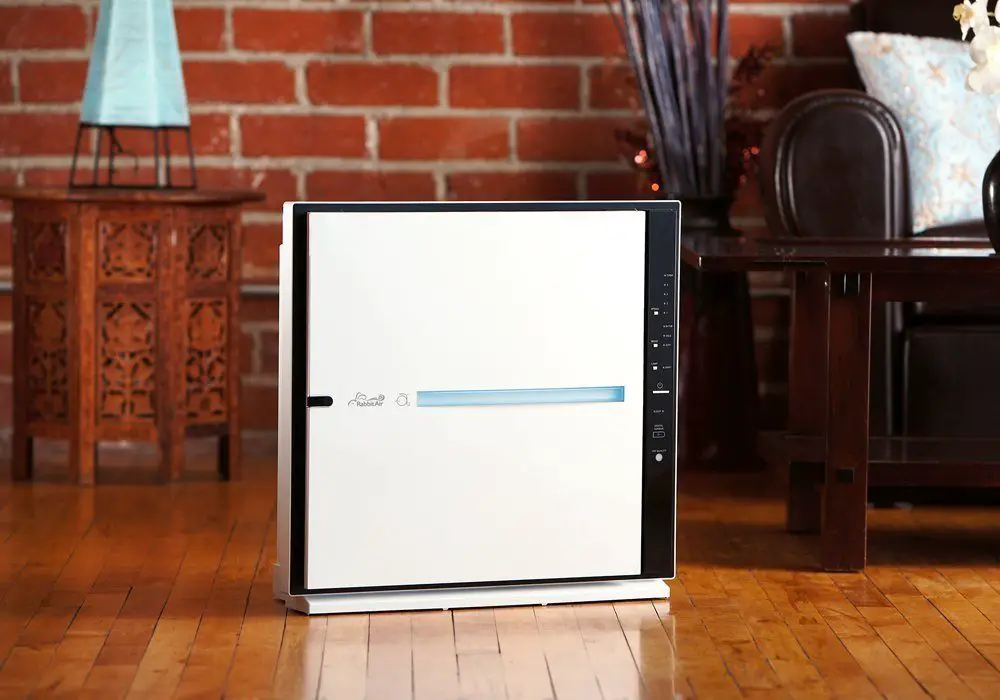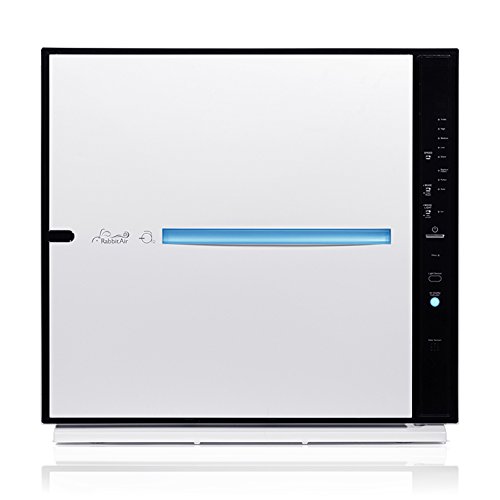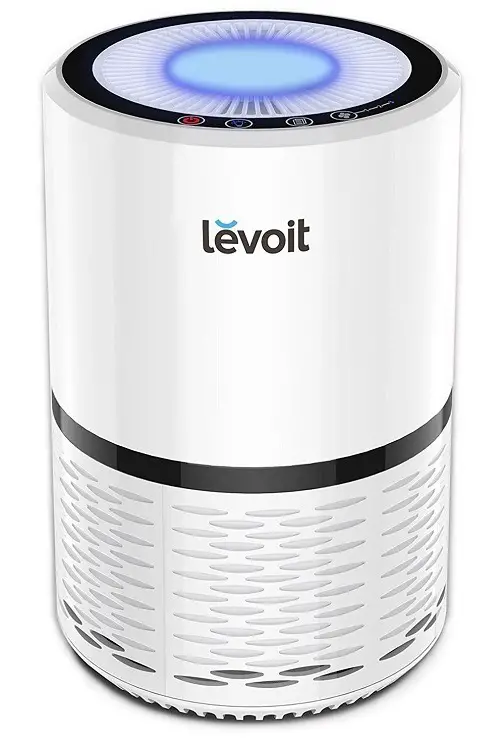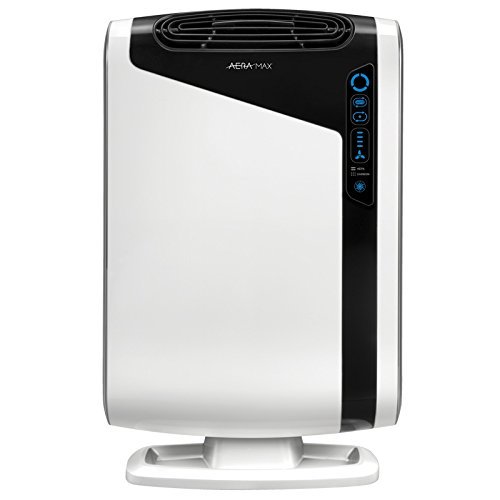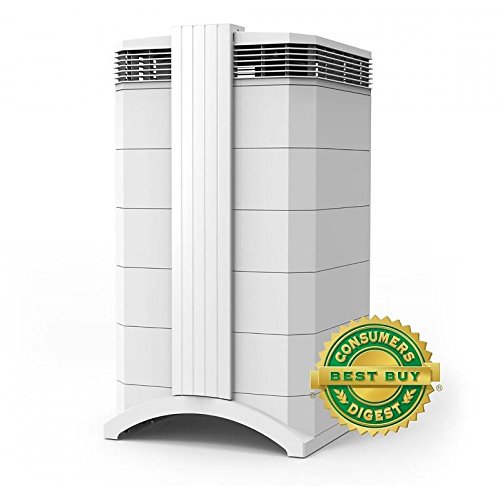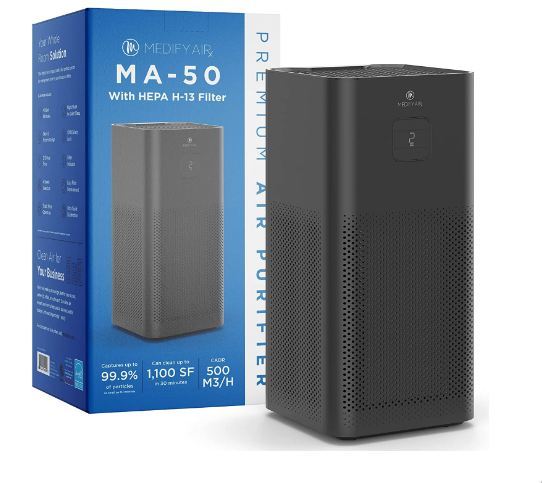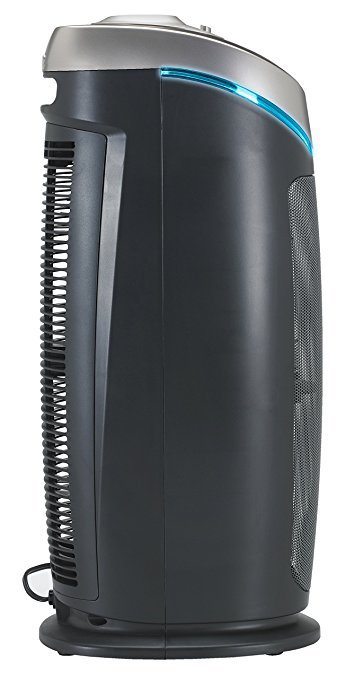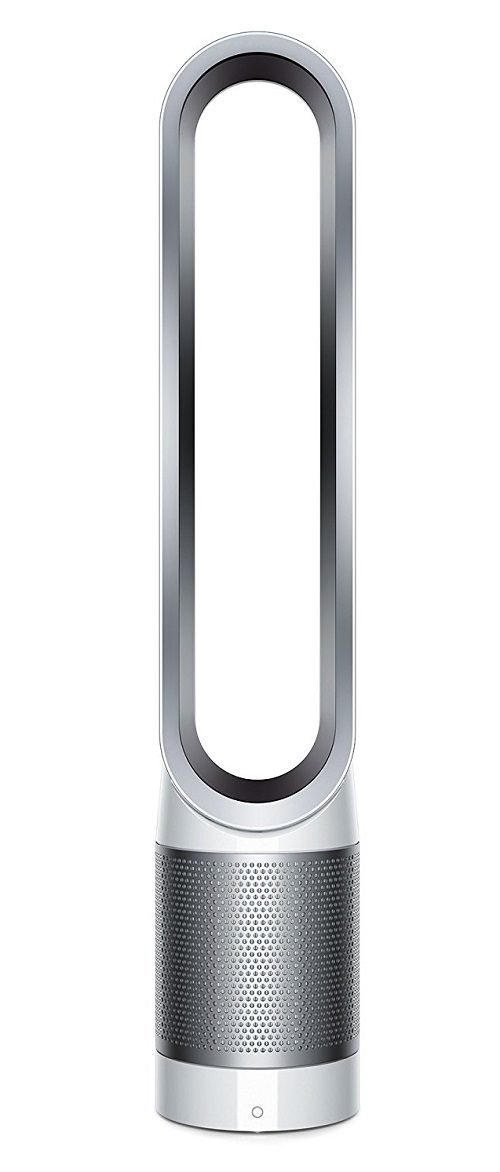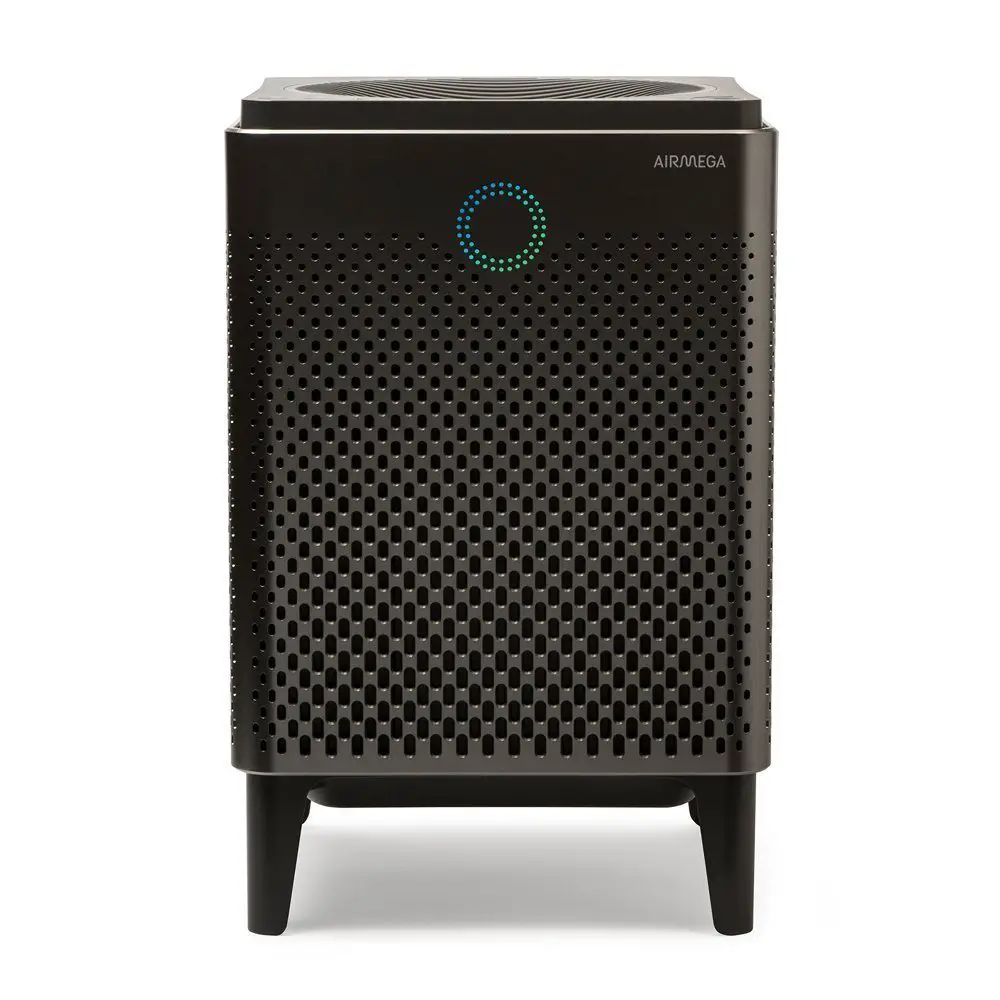Are you looking for the best HEPA air purifier for your home?
You’ve come to the right place.
Why Use a HEPA Air Purifier?
Your home's indoor air is not as clean as you think.
In fact, the air inside your home is several times dirtier than outdoor air - even in most cities.
And allergy sufferers take note: the concentration of some allergens, especially pet dander and mites, can be 100 times higher indoors than outside.
All sorts of pollutants - from obvious ones like tobacco smoke to hidden ones like furniture materials - contaminate the air you breathe.
Indoor air pollution is considered to be a serious health issue by many experts, causing short-term problems like throat and eye irritation to serious long-term health issues including some forms of cancer and respiratory diseases.
A high-quality air purifier can help strip harmful particulates from your indoor air.
That's why buying an indoor air cleaner is one of the top EPA recommendations for improving indoor air quality.
What's In This Buying Guide
In this in-depth HEPA air cleaner buying guide, we are going to review some of the best HEPA air purifier of 2022.
In this buying guide, we tell you which HEPA air purifiers are best for different room sizes, asthma relief, allergies and other common needs and situations.
We also explain everything you need to know about HEPA air filters and how to buy the right one for your needs.
You may also want to consider a portable air conditioner. Many portable air conditioners are equipped with a HEPA filter that traps mold, pollen, dust and other pollutants - that said, few air conditioners will do this as effectively as one of the dedicated HEPA air purifiers reviewed on this page.
If you still want a compact air conditioner for your home, check out the Friedrich 8,000 Btu compact portable room air conditioner.
Best HEPA Air Purifiers for Home
The highest-rated and most proven HEPA air cleaners in the US are listed below. Click on a name to learn more.
After this table, we review most of these units one at a time, in detail.
Disclamer: All links below go to Amazon.com

Rabbit Air MinusA2

- Best HEPA Air Purifier (Overall)
Max. room size:
Up to 700 sq. ft.Suitable for:
Bedrooms
Studies
Kitchens
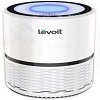
Levoit LV-H132

- Best for a Small Room
Max. room size:
Up to 86-150 sq. ft.Suitable for:
Bedrooms
Studies
Living room
Kitchen
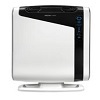
AeraMax 300

- Best for a Large Room
Max. room size:
Up to 300-600 sq. ft.Suitable for:
Large rooms
Large kitchens
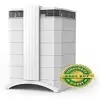
IQAir HealthPro Plus

- Best for Allergies and Asthma Relief
Max. room size:
Up to 1,125 sq. ft.Suitable for:
Living rooms
Larger rooms
Offices
Basements
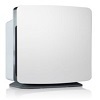
Alen Breathe Smart

- Best for Dusty Homes
Max. room size:
Up to 1,100 sq. ft.Suitable for:
large living rooms
Open floor plan living areas
Bedroom
Office combinations

Alen Breathe FIT50

- Best for Mold
Max. room size:
Up to 900 sq. ft.Suitable for:
Living rooms
Open floor planes
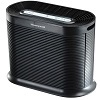
Honeywell HPA300

- Best for Pets
Max. room size:
Up to 465 sq. ft.Suitable for:
Mid-size living rooms
Normal sized bedrooms
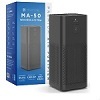
Medify MA-50 True HEPA Purifier

- Best for Pet Dander
Max. room size:
2,200 square feetSuitable for:
Homes, apartments, bedrooms, living rooms, offices, schools, universities, classrooms, hospitals, restaurants, and other businesses
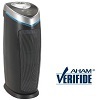
GermGuardian AC4825

- Best Budget Air Purifier
Max. room size:
Up to 167 sq. ft.Suitable for:
Den
bedroom
Baby nursery
Home office
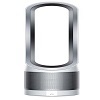
Dyson Pure

- Best Wi-Fi Connected Air Purifier
Max. room size:
Up to 1,000 sq. ft.Suitable for:
Large living rooms
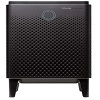
Airmega 400S

- Best Full-Home HEPA Air Purifier
Max. room size:
Up to 1,560 sq. ft.Suitable for:
Large living rooms
The Rabbit Air Minus A2 has everything you want in an air purifier. It has six stages of purification to ensure your indoor air is clean and healthy.
It can cover a room as big as 700 square feet using very little energy.
It also runs super quiet, making it ideal even for your bedroom.
Air Purification
The Rabbit Air Minus A2 is one of the most capable HEPA air purifier. It can capture pollutants as small as 0.3 microns with 99.97% efficiency.
This captures all sizes of particles including mold, dust, pollen, pet dander and soot.
What makes this air purifier so effective is its six stages of purification:
- Pre-filter – Large particles of dust and other allergens are captured.
- Medium filter – The purifier targets particles larger than 1 micron including pet dander, pollen, and mold.
- BioGS HEPA Filter – This filter traps smaller allergens and pollutants up to 0.3 microns in size.
- Customized filter – Users can choose a customized filter depending on their air purification needs. You can get a filter specifically for pet allergy, germ defense, toxin absorption and odor removal.
- Activated carbon filter – This filter reduces chemicals and unpleasant odors.
- Negative ion generator – Helps purify the indoor air further and has various other health benefits.
Room Coverage
The Rabbit Air MinusA2 provides coverage of up to 700 square feet. It makes two air exchanges per hour.
If you use it in a 350 square feet room, it can make four air exchanges per hour.
Other Features
You can use the Rabbit Air MinusA2 as a standalone or wall-mounted air purifier.
If you hang it on a wall, choose one of the beautifully customized panels that Rabbit Air makes in collaboration with artists.
The panel has a relaxing LED light that produces a range of soothing colors. It’s perfect for winding down after a long day.
The air purifier is Energy Star certified. It uses very little energy to keep your home clean and healthy.
It runs super quietly even at the highest setting. At the lowest setting, you’ll barely hear it. It has a light sensor that detects when it’s dark and automatically puts the purifier in night mode.
The whisper-operation and night mode features make the Rabbit Air MinusA2 great for the bedroom. It can run all night without disturbing your sleep.
This compact air purifier is small enough to fit on your bedside table yet still powerful enough to keep dust, mold and other pollutants away.
When placed in a small room, it freshens up the air and clears up odors within minutes.
If you are looking for a compact air purifier for a small to the mid-size room, the Levoit LV-H132 is perfect.
You can use it in your bedroom, living room, kitchen or study. You can even carry it to the office.
It runs quietly, too, so you don’t have to worry about disturbing your colleagues.
The cylindrical design looks really stylish. It won’t look out of place wherever you place it.
Air Purification
The Levoit LV-H132 provides a limited coverage of up to 86 square feet, though some customers say it works just as well for larger rooms of up to 150 square feet.
Using a 3-stage purification process, it can capture 99.97% of pollutants and allergens as small as 0.3 microns.
- Pre-filter – this stage captures the larger particles like dust, fungi, pet dander, and allergens.
- True HEPA filter- captures dust mites, pollen, and other airborne pollutants.
- Activated carbon filter – this is a deodorizing stage. It eliminates household odors associated with pets, cooking and smoking.
If you suffer from nasal stuffiness or allergies, this purifier will help. Just place it in a room where you spend most of your time, and you’ll feel more relieved. It can also help if you or someone in the family has smell sensitivity.
Room Coverage
The Levoit LV-H132 is meant for small rooms of between 86-150 square feet.
Note that as you increase the size of the room from the recommended maximum of 86 sq ft., the purifier is going to get less efficient.
So if you need a high level of purification, use it only in the recommended room size.
Other Features
The purifier has three fan speed settings that vary the amount of air going through the purifier.
Whichever speed you choose, the purifier runs quietly. This is especially helpful at night. You can place it right next to your bed and still sleep peacefully. The soft night light on top of the unit helps you relax.
This purifier is completely ozone-free. Ozone is an irritant and can aggravate asthma and other respiratory problems.
If you want a purifier to use in a large room (300-600 sq ft.), the AeraMax 300 is one of the best. It is powerful, highly efficient at cleaning up indoor air and is very helpful for those with asthma or allergies.
Purification Capability
The AeraMax 300 can remove 99.97% of pollutants and allergens in the air. It can capture particles as small as 0.3 microns. These include smoke, dust, pet dander, mold, airborne bacteria, germs, and dust. It can also reduce common household odors.
The AeraMax 300 works through a four-stage purification process.
- Carbon filter – eliminates household odors and traps large airborne particles.
- True HEPA filter – removes most of the airborne particles including the smallest ones such as viruses and mold spores.
- AeraSafe antimicrobial treatment – this feature protects and extends the life of True HEPA filter by keeping away odor-causing bacteria, fungi, and mildew.
- Plasma true technology – Uses ionization to remove pollutants and allergens from indoor air.
Note: There are concerns that air purifiers that use ionization produce ozone, a harmful and toxic gas. However, the amount of ozone emitted by the AeraMax Purifier is below the recommended maximum exposure levels.
Additionally, the AeraMax 300 and other AeraMax models are on the list of California Certified Air Cleaning Devices. So unless your doctor advises you otherwise, this is a low-risk purifier.
But if you are worried about the ozone, there is a button to turn off ionization.
Room Coverage
The AeraMax 300 can cover large rooms of between 300 and 600 feet. When ionization is on, do not use it in a room smaller than the recommended size range as it can increase the concentration of ozone to harmful levels.
Other Features
The AeraMax has a special high-performance mode that you can turn on during flu season. It works extra hard to capture influenza virus in indoor air and keep your family healthy.
It’s also great for those with allergies or asthma. It is certified by the Asthma and Allergy Foundation of America as allergy and asthma friendly.
If you are looking for an air purifier to help with your allergies or asthma, you may have already heard about the IQAir HealthPro.
Maybe you read about it somewhere, or a friend recommended it.
Well, the good things you’ve probably heard about this unit are true. This really is the best purifier for allergies and asthma relief.
Air Purification
While all the purifiers we have mentioned in this buying guide can filter particles of up to 0.3 microns, the IQAir HealthPro can capture even smaller particles of up to 0.003 microns.
That’s really small - it ensures there is practically nothing left in the air to affect your health.
The HelathPro uses a proprietary HyperHEPA filtration which is dozens of times more effective than traditional HEPA filtration. It can capture 99.5% of all particles in the air.
Many owners of the HealthPro claim it has nearly ended their stuffy noses, allergic reactions, smell sensitivities and asthma-related problems.
Despite the hyper-performance of this HEPA purifier, the filters also last longer than in other purifiers.
It use three filters to purify the air:
- the main HyperHEPA filter for ultrafine particles
- the PreMax filter for pre-filtering larger particles and
- the optional V5 filter for absorbing odors.
There is an LED display that shows how many hours are remaining for each filter, so you’ll know when to replace each one. Color coded indicator lights tell you exactly which filter you need to replace.
Room Coverage
The HealthPro purifier can cover rooms as large as 1,125 square feet.
So if you are looking for a powerful air purifier to clean up a large or extra-large room, try this one.
It’s a great choice for living rooms, larger offices, basement and any other room where you spend a lot of time.
Other Features
With its size, extra-fine filtration and power, you are probably expecting a noisy machine.
On the contrary, the HealthPro runs surprisingly quietly. You can even use it in your bedroom without getting woken by a noisy fan.
One reason for its whisper quiet operation is what the manufacturer calls an EvenFlow Diffuser that produces clean air in multiple directions at a 320-degree angle. This reduces noise as air leaves the unit.
It also uses very little power, similar to the amount consumed by a single light bulb. This is thanks to an innovative fan and motor design that delivers a high airflow while using minimal power.
The downside? the HealthPro is not cheap.
But considering how well it cleans the air compared vs. other purifiers, its $800 price is not bad.
When setting up in a room of up to 1,100 square feet, the Alen BreatheSmart air purifier can clean dust and allergens from your air in less than 2 hours.
It's also stylish - you can choose from 14 color options including white, bronze, oak, green and blue. The purifier will look perfectly in place wherever you put it.
Air Purification
Alen BreatheSmart is designed for mid-sized to very large rooms of up to 1,100 sq ft. So you can use it in a large living rooms, open floor plan living areas, and bedroom + office combinations.
This air purifier has a sensor that continually monitors air quality and automatically adjusts its performance to ensure maximum efficiency and to save energy.
An LED light tells you how dirty your air is. The higher the concentration of pollutants, the harder the purifier works to clean indoor air.
At highest concentration, the purifier engages Turbo Mode to remove pollutants as quickly as possible.
The BreathSmart air purifier operates very quietly. At the highest speed setting, the noise level is a minimal 56 dB. That’s quieter than normal conversation or background music.
At its lowest speed, the noise is just 41.5 dB which is as quiet as a library.
Room Coverage
The Alen BreatheSmart air purifier purifies rooms of up to 1,100 sq ft. in size. This is much more coverage than most air purifiers - even the most powerful typically cannot handle a room/apartment larger than 900 ft.
So this unit is especially good for open plan rooms that span multiple areas such as the living room and kitchen.
Other Features
The Alen BreatheSmart produces what the company calls pink noise instead of white noise. They say it’s more relaxing and better at countering high-frequency sounds.
If you live in an area with a lot of dust, your central air system may not be able to handle all of it. The Alen BreatheSmart air purifier is a better and cheaper alternative to buying a more expensive air conditioning system. You can move it from room to room, it uses less power and purifies air better than the central AC.
This is a close variation of the Alen BreatheSmart air purifier above, but it is less expensive, covers less space and is designed specifically for dealing with mold.
You can also buy a FIT50 setup for other specific issues including: pets, wildfire smoke, household odors, asthma, or allergies.
Like the original Alen BreatheSmart, the Alen BreatheSmart FIT50 comes with 14-panel color options to ensure the purifier blends in with your home.
Air Purification
The FIT50 uses a HEPA-Silver Filter designed to target mold, bacteria, and allergens. It’s helpful for those with allergies or asthma.
It has a sensor that automatically detects air quality and adjusts performance. An LED light on the control panel will tell you how hard the purifier is working and the current air quality inside your home.
Room Coverage
The Alen BreatheSmart FIT50 is ideal for rooms of up to 900 sq, ft. It does two air changes per hours, more if the room is smaller than 900 sq. ft.
Other Features
As with its sister model, the FIT50 uses WhisperMax technology to keep noises to a minimum. It also produces pink noise for relaxation, especially at night.
It is Energy Star certified.
If you want to enjoy the company of a dog or cat without the accompanying respiratory issues and allergies, get this air purifier.
This Honeywell allergen remover doesn’t cover as much square footage as many other purifiers on our list, but it is really good at stripping pet-allergens from the air.
The HPA300 circulates the air in a room five times an hour. With such a rapid air cycle, pet fur and dander rarely has time to settle on furniture or find its way into your lungs.
Air Purification
The Honeywell allergen remover has four cleaning levels:
- General Cleaning
- Allergen Removal
- Germ Removal and
- Turbo Mode.
You select the mode you want via the control panel.
The True HEPA filter in this purifier captures allergen particles as small as 0.3 microns. It traps dust, pollen, mold, pet hair and dander, smoke particles and other allergens in the air.
It also has a carbon pre-filter which traps larger particles and absorbs gasses and odors.
Room Coverage
The Honeywell HPA300 allergen remover works best in rooms up to 465 sq ft. This includes mid-size living rooms and normal sized bedrooms.
Other Features
The purifier features easy-to-maintain filters. On average, the pre-filter needs to be replaced every 3 months while the main HEPA filter needs to be replaced once a year.
The HPA300 purifier is Energy Star certified so it won’t shoot up your power bills
Sometimes people suffer from allergies because of their furry friends.
If you or a family member suffers from this issue, the Medify MA-50 True HEPA Purifier can help you out.
It is a powerful device with four side air intake and a 3-stage filtration process that creates a clean and fresh indoor atmosphere for your home.
The MA-50 operates on four different fan speeds and emits 56 decibels of noise at the highest speed.
Plus, there is a night light feature, and you can also dim the control lights for undisturbed sleep.
Air Purification
This Medify unit uses a triple-stage air filtration system to clean and purify the air. The first stage is the pre-filter designed to trap large particles like dust, lint, and hair.
Next, the air passes through an H-13 True HEPA Filter. This high-efficiency filter can trap up to 99.9% airborne particles as small as 0.1 microns.
Lastly, a layer of activated carbon catches and absorbs smaller gaseous and odor-causing molecules that make it across the previous stage.
There is also a UV light disinfection function that works as an added layer of protection and safeguards you from bacteria, viruses, and mold particles.
Room Coverage
This Medify unit is highly suitable for large spaces. It can clean areas as big as 2,200 square feet in one hour. And if you use it in a 1,100 square feet room, it will deliver two air changes in an hour.
Other Features
Other notable features that the Medify MA-50 boasts include its CARB, ETL, and Energy Star certifications.
It comes with a USA-registered Lifetime Warranty. But it is only applicable when genuine Medify replacement filters are used.
In addition, there is a child lock to prevent misuse, a filter indicator for timely filter changes, a 2 to 12-hour timer function, as well as a sleep mode for peaceful nighttime sleep.
Most air purifiers cost $200 to $600. Some special-function and high-powered models can cost over $800.
But you won’t need to spend that much money to get a quality air purifier.
The GermGuardian AC4825 for example costs less than $100, but is still powerful enough to clean the air in a medium sized room.
Air Purification
The GermGuardian AC4825 uses a 3-in-1 process to purify indoor air.
- The unit uses a true HEPA filter to capture 99.97% of allergens and pollutants as small as 0.3 microns.
- It uses UV-C light to kill germs.
- Finally, it uses a charcoal filter to absorb common household odors.
You can also choose from 3 speeds depending on your comfort preferences.
That's a LOT of functionality for less than $100.
Room Coverage
The recommended max room size is 153 square feet, making the GermGuardian AC4825 air purifier suitable for smaller rooms such as the den, bedroom, baby nursery or home office. It's also a great air purifier for tiny homes.
Other Features
According to several customers, this is not the quietest air purifier.
At its highest speed setting it makes a bit of noise. Most describe it as white noise. But you can turn it to the lowest setting for less noise.
Other features include a filter change indicator and an ability to turn the UV-C light on or off.
Overall, this purifier offers a lot of value with little downside. But if you need to clean your house or a large open space - look elsewhere.
The Dyson Pure Cool Link is a unique-looking air purifier. It has a decidedly futuristic design.
Another unique feature is its Wi-Fi connectivity. You can connect the unit to your WiFi and control it from your smartphone.
It also works with Amazon Alexa and produces air quality reports.
Purification Capability
The Dyson Pure Cool Link works both as an air cleaner and a surprisingly powerful cooling fan.
For purification, it uses a 360-degree glass HEPA filter to capture particles as small as 0.3 microns. It also has activated carbon granules to absorb odors and VOCs.
Through the companion app, you can monitor your indoor air quality wherever you are.
This Dyson air purifying device is also smart: it automatically detects air quality and reduces or increases purification performance.
Room Coverage
The purifier covers medium and large-sized rooms up to around 1,000 square feet.
It uses Air Multiplier technology to make sure that purified air is circulated as far wide as possible within a room.
Other Features
The WiFi connectivity and Alexa compatibility are the two coolest features of this air purifier.
Many customers also love the night mode where the unit switches to the quietest settings and dims the LED lights.
It has ten speed settings (most units have 3) and can automatically shut off if it is tipped over.
Make sure you download the Dyson app to get the best from this model .
If you need to purify the air in a huge room (more than 500 sq. Ft.) or multiple places, smaller air filtration units won’t do.
What you need is a high-powered portable unit with high airflow.
For whole home use, I recommend the Airmega 400S smart air purifier.
This unit is rated for areas up to 1,560 sq. Ft. So you can use it in one large open space or use it to purify your entire home.
Just make sure to place it in a central location and leave the doors to different rooms open.
You’ll have to pay a bit for all that power – around $750 – but it’s worth it if you need a high-performance unit for a large space.
Air Purification
To make sure it adequately covers a large area, the Airmega 400S starts by sucking in a lot of air.
Unlike most portable HEPA air purifiers that have only one air inlet, the 400S sucks in air from two sides. This allows it to clean more air in less time.
The purified air is then pushed out at the top using powerful fans. This ensures the air spreads rapidly around the room.
To clean the air, the 400S uses a triple filtration mechanism.
Pre-filter – This is a mesh filter that captures large debris like pet hair and fur. It improves air purification and also reduces the burden on the HEPA filter, ensuring it lasts longer.
Max2 filter – This consists of two layered filters: a HEPA filter to capture the tiny bits of dust and allergens as small as 0.3 microns and an activated carbon filter to eliminate odors and VOCs.
To ensure proper air purification, the 400S will indicate the remaining life of each filter. An indicator will tell you when it’s time to wash the pre-filter and replace the Max2 filter.
Room Coverage
The Airmega 400S can purify air efficiently in an area of max size 1,560 sq. Ft.
It makes two air exchanges per hour; more if you use it in a smaller room. Purification efficiency will go down if you use it in a more significant area than the recommended maximum.
Other Features
You can connect the 400S to WiFi and control it remotely from an app.
This lets you control different settings and features wherever you are. You can change the modes, increase or reduce fan speed or set a schedule. The unit also sends real-time air quality reports to the app.
You can also connect the unit to Alexa and control it via an Amazon Echo smart speaker.
The 400S comes with two main modes.
There is the smart mode which automatically controls various settings including night mode (using the integrated light sensor) and eco mode (using the integrated pollution sensor).
There is also a manual mode where you change the fan speed yourself.
Another cool feature is the LED air quality indicator at the front of the device. The ring lights up in a different color depending on how clean or dirty the air is.
HEPA Air Purifier Buying Guide
What is a HEPA Filter and How Does it Work?
A HEPA or High Efficiency Particulate Air filter is an ultra-fine filter that removes pollutants from the air. Indoor air contains a variety of irritants and allergens that can cause health problems like breathing issues.
Using a HEPA air purifying unit ensures that the air you breathe in is clean and free of contaminants.
So how does it work?
A HEPA filter is designed to remove particles as small as 0.3 microns. Since most air pollutants are 0.3 microns or bigger, a HEPA filter can prevent up to 99.97% airborne particles.
It consists of thin glass fibers randomly arranged to form a dense, paperlike material. It is then folded into pleats to create the filter that installs into the air purifier.
As the air flows through the pleated surface, the fibers trap the pollutants. Then, as a layer of larger particles builds up over the filter, it starts preventing smaller particles from finding their way across.
While a HEPA filter is good on its own, it is usually paired with a pre-filter and activated carbon filter to further enhance its efficiency. The pre-filter traps visible particles like lint and hair so that the HEPA filter only has to deal with smaller ones, improving its efficiency.
But while the HEPA filter is extremely effective against solid particles, it is ineffective at preventing odorous particles from going through. A carbon filter is more suited for that purpose.
Medical Grade HEPA, True HEPA, and HEPA Type: Key Differences
When shopping for a HEPA air purifier, you’ll come across these three terms used to describe different types of purifiers: HEPA type, True HEPA and medical grade HEPA.
Here’s a quick description of each type.
Medical grade HEPA: Medical grade HEPA or H13 HEPA refers to the highest grades of HEPA filters (H13 and H14). They can trap between 99.95% and 99.995% of ultra-tiny particles.
In contrast, lower grade (H10 to H12) HEPA filters capture between 85% and 99.5% of tiny airborne particles. In short, medical grade HEPA filters are better at cleaning indoor air.
True HEPA: These are the standard HEPA filters that can capture 99.97% of particles with a size of 0.3 microns.
HEPA Type/HEPA Like: HEPA Type and HEPA Like are essentially marketing terms used by companies that want you to think you are buying a HEPA air cleaner.
Because these filters are not certified, you have no idea how efficient they are. Manufacturers may claim a 99% or higher efficiency, but there’s no way to determine whether it’s true.
Here’s the bottomline: If you are specifically looking for a HEPA air purifier, look for those labelled as Medical Grade HEPA (or H13 HEPA), True HEPA or HEPA.
These are the filters the EPA and health organizations like the CDC recommend for improving indoor air quality.
One figure you can check when comparing different HEPA air filters is the MERV rating, though not all manufacturers provide it. The MERV rating indicates a filter’s efficiency. Rating range from 1 to 16. The higher the MERV rating, the better the purifier is at capturing airborne pollutants.
Common Indoor Pollutants
Here are the most common air pollutants inside the house.
Solid Fuels
According to the WHO, particulates emitted by burning solids such as firewood and coal are some of the most harmful indoor air pollutants. The soot and smoke can cause a wide range of health problems including asthma, heart disease, and cancer.
Fortunately, the use of solid fuels for cooking or in the fireplace has drastically gone down over time in the US. If you still use wood or coal to light up your fireplace, take extra caution especially if there are women and children around (they are the most vulnerable).
You should also take care to locate an outdoor charcoal grill far enough from the house.
Carbon Monoxide
This is an extremely dangerous one and can cause death. Sources of carbon monoxide include solid fuels and appliances such as heaters.
Note: Purifiers do not eliminate harmful gasses, including carbon monoxide, from the air.
Tobacco Smoke
If there is a smoker in the house, it’s a health hazard to everyone else. The smoke increases the risk for asthma, cancer, and TB among other illnesses.
Sometimes, the smoke and smell from a nearby house or apartment can also find its way inside your house. An air purifier can help.
VOCs
Volatile organic gasses have many sources including paint, furniture materials, cleaning supplies and air fresheners.
According to the EPA, VOCs can cause health problems like throat, nose and eye irritation, nausea, liver and kidney damage and cancer.
Unfortunately, most VOCs cannot be eliminated using an air purifier. The EPA recommends proper ventilation, using products as directed by the manufacturer and hiring a professional to test for the presence of formaldehyde, one of the best known and measurable VOCs.
Mold
Mold spores, the reproductive bits of mold, can be as small as 3 microns. So they easily float around in the air.
Normally, mold spores are not harmful unless they land on a surface that is conducive to the growth of mold (such as a moist dark corner). But when breathed in, these spores can aggravate respiratory problems and affect those who are allergic to mold.
Most air purifiers can easily capture mold spores and reduce their levels in the air.
Dust
Indoor dust is not just fine dirt like the one you find outside. It’s a combination of normal dust, pollen, pet dander, dead skin cells, soot, and lint.
These particulates are especially dangerous for people with respiratory problems and allergies. You may find yourself getting a scratchy throat, stuffy nose, and eye irritation.
Most air cleaning units can capture these particles and keep your air allergen-free.
Household Odors
By household odors, I don’t just mean awful smells from sources like pet litter or dampness. Even normal smells from activities like cooking can seriously affect people who are smell-sensitive.
Air purifiers use activated carbon to filter out most household odors, leaving the air fresh and odorless
What to look for in a HEPA Air Purifier
When it comes to cleaning indoor air, there are so many options. While the EPA doesn’t recommend a specific kind of air filter, we believe HEPA filters are one of the most efficient options.
If you want to buy the right HEPA air filter, you should carefully consider aspects like coverage area, ozone generation, and brand reputation. You should also factor in some other aspects.
Below is a detailed account of all the things you should look for in a HEPA purifier.
Coverage Area: How Much Area Does The Air Purifier Clean?
Get a purifier whose recommended coverage area in the same range as the biggest room you are going to use it in.
If an air cleaner is suitable for a large room, do not use it for a small room. That will be a waste of energy and might be too noisy.
If a purifier is for a small room, do not use it in a larger room. It will clean the air poorly and will have a shorter lifespan because it has to work harder.
Air Exchanges Per Hour (ACH): A Good Indicator of Air Purifier Efficiency
The more exchanges a purifier can make per hour, the cleaner the air will be. The rate of air exchange is determined by how much air the fan can blow through the filter (usually measured in CFM or cubic feet per minute) and the size of the room.
The ideal ACH is between 4 and 6.
The ACH is why it’s very important to use an air cleaner in the recommended room size. A small purifier will have few exchanges if placed in a too-large room. Your indoor air will be dirtier.
Most air purifiers have fan speed settings that vary the CFM or the rate of airflow. You can reduce the speed when you need the fan to be quieter such as when you sleep or when there is little pollution in the air, and you want to conserve energy.
Some units have sensors that detect air quality and automatically vary the fan speed. They carry out more air exchanges when they detect more particles and fewer exchanges when the air gets clean.
Price: How Much Does An Air Purifier Cost?
If you are on a budget, several good quality air purifiers cost less than $150. They include purifiers for small and mid-sized rooms and desktop variations.
The average price for most air purifiers is $200-$350. Here you can find purifiers for rooms as big as $900 square feet.
In the $400+ budget range, you’ll find high-performance purifiers with multiple purifying technologies, built-in humidifiers and the ability to purify rooms larger than $1,000 square feet.
Filter Replacements
Consider how often the filters need to be replaced, whether you can replace them yourself and how much replacements cost. Also, check whether multiple filters need replacement. There are usually two; the pre-filter and filter. Some pricier models may have three.
Energy Usage
Air purifiers run continuously, day and night. So it’s important to find one that is energy efficient.
Look for an air purifier that is Energy Star certified. An Energy Star purifier uses around 225 kWh per year. That’s 40% (or around $30) less than typical purifiers which use around 550 kWh annually.
Noise Level
Look for a unit that runs quietly even at the highest setting. It should not be louder than 50-60 dB especially if you are using it in your bedroom or the nursery.
Clean Air Delivery Rate (CADR)
You may have seen CADR figures when researching different models. The Clean Air Delivery Rate is simply the measure of the volume of clean air the air purifier delivers.
It’s a good way to compare different models. It also gives a better sense of a purifier’s efficiency.
A purifier may have a high ACH or CFM, but maybe not all that air is getting filtered. Knowing how much clean air it re-releases back into the room is a better way of judging its effectiveness.
A single air purifier may have varying CADR figures for different particulates. One for smoke, another for dust, a different one for pollen and so on.
Ozone Emissions
As I mentioned, there are concerns about the safety of purifiers that use ozone for air purification. Nowadays, more people prefer ozone-free air purifiers.
If you are concerned about exposure to ozone, get an ozone-free one too. Otherwise, check whether the model is on California’s list of approved ozone-generating air cleaners. Make sure you also follow the manufacturer’s directions in setting up and using the purifier.
Extra Features
Some extra features that are worth your money include a built-in humidifier, air quality detector, and filter life indicator. A Wi-Fi connected unit is great but not worth spending extra for especially if you are on a tight budget.
Other bonus features to consider include night mode, relaxation noise and lights, LCD and décor-friendly front panels.
Manufacturer’s Reputation
Whenever possible, opt for a unit from a trusted manufacturer. Read product reviews to see what customers have to say not just about the quality of the product but also about customer service in general.
Warranty
The typical warranty is between 1 and three years though some can stretch as long as five years. Make sure you check whether the same warranty applies to all components. Filters usually have no warranty.
Pros and Cons of HEPA Filters
Pros
Cons
Cleaning & Maintaining a HEPA Filtration System
Depending on the type of air purifier you have, the HEPA filter will be disposable, washable, or permanent.
You should check the owner’s manual to know the kind of filter you have. All these types have different approaches towards cleaning and maintenance.
Let’s take a look:
Permanent HEPA Filter
Permanent HEPA filters can be cleaned and reused. They are not washable as the water can damage them, so you should be very particular about their cleaning and maintenance.
Here’s how to go about it:
Turn off the device and unplug it for safety purposes.
Carefully take the filter out of the device. It is a good idea to cover the floor with plastic or old sheets as some of the dirt from the filter can fall on the ground, creating a mess for you to clean afterward.
Take a vacuum cleaner – we prefer a handheld model because it is easy to use – and use a nozzle or soft brush attachment to clean the filter.
Be careful not to push it into the filter. Rather, use a strong suction and horizontal movement to get everything off the filter.
Once clean, reassemble the device and continue to use it like before.
Washable HEPA Filter
A washable HEPA filter is another type of reusable HEPA filter. You can wash it with water to remove the debris. However, be sure to read the manual to learn about the washing process.
For example, some washable HEPA filters should only be rinsed with water, while others are dishwasher-safe and can withstand a complete washing cycle.
Consult your manual to understand the washing procedure and follow the guidelines to preserve your HEPA filter’s life.
Disposable HEPA Filters
A disposable HEPA filter cannot be cleaned or washed. Rather, you have to replace it with a new one every time it is clogged.
Now, most disposable HEPA filters have a lifespan of 60 to 90 days. You should check the manual to learn how often yours needs replacing and where to find replacement units.
Summary
Buying an air purifier is one of the best things you can do for your health - and that of your family.
If you have anyone in the house who suffers from allergies or a respiratory problem, it can actually be critical to their health.
I hope this guide has helped you find the best air purifier for your needs.
Leave me a comment below or a message on our Contact Page if you have any questions!
HEPA Air Purifiers: FAQs
How Big of a HEPA Air Purifier Do I Need?
The trick is to find a HEPA air purifier that can provide adequate air exchanges (at least 3) per hour to keep the room’s air clean. The room size matters a great deal.
Manufacturers will often label a purifier with the recommended room size; either regarding square feet or general terms like small, medium or large sized.
There are three levels of air purifiers based on room size: Compact ones for small rooms measuring less than 150 square feet, larger ones for medium-sized rooms measuring 170-400 square feet and big ones for large rooms of at least 500 square feet.
There are also powerful air filters designed for open areas over 1,000 square feet.
Determine the size of the biggest room you are going to be using it in and then get a model that can serve a room of that size. Note that if you have an open concept home, you have to include the entire open area in your measurements.
How Long Does a HEPA Air Filter Last?
One year on average.
Some units have an indicator showing how long a filter has left and will notify you when you need to buy a new one.
This period can be extended if you don’t use the air purifier often. It can also be shorter if your indoor air has more pollution than usual.
Interestingly, in the short term, a HEPA filter actually gets better at cleaning air as it clogs with particles. This extends the filter’s lifespan.
In the long term, though, the filter’s performance decreases as air struggles to pass through it. So it’s important to replace the HEPA filter in your air purifying unit as often as the manufacturer recommends.
Do HEPA air purifiers help with COVID-19?
Contrary to popular belief, HEPA air purifiers can capture particles smaller than the commonly stated 0.3 microns.
In fact, they are even more efficient at capturing particles smaller than 0.3 microns because of a scientific principle called Brownian motion.
The virus responsible for causing Covid-19 measures approximately 0.125 microns. A HEPA air purifier would have an easy time capturing the viruses. Models with ultraviolet technology (UVC) will capture and kill the viruses.
However, having a HEPA air purifier in the room does not fully protect you from exposure to COVID-19. One possibility is that viruses from someone in the room that is infected may reach you before they reach the filter.
So while a HEPA air cleaner can reduce the concentration of COVID-19 viruses in the air - and the CDC acknowledges as much – it does not guarantee zero exposure. It’s important to practice other protective measures as well including social distancing, masks and hand hygiene.
Are HEPA air purifiers worth it?
If you want an air purifier that removes as many airborne pollutants as possible, then a HEPA air filter is worth it.
It is especially good for asthma and allergy sufferers.
If you mostly want to get rid of bad odors in your home, look for a cheaper unit with a basic filter and an activated carbon filter.
How long do HEPA filters last?
About one year. Yours may last longer if you use your air purifier only occasionally. It may also last for less time if there is higher than normal pollution, such as during wildfire season.
Can I wash a HEPA filter?
No, most HEPA filters are not washable. Usually, only the pre-filter can be washed. For the HEPA and activated carbon filters, you have to replace them after some time.

